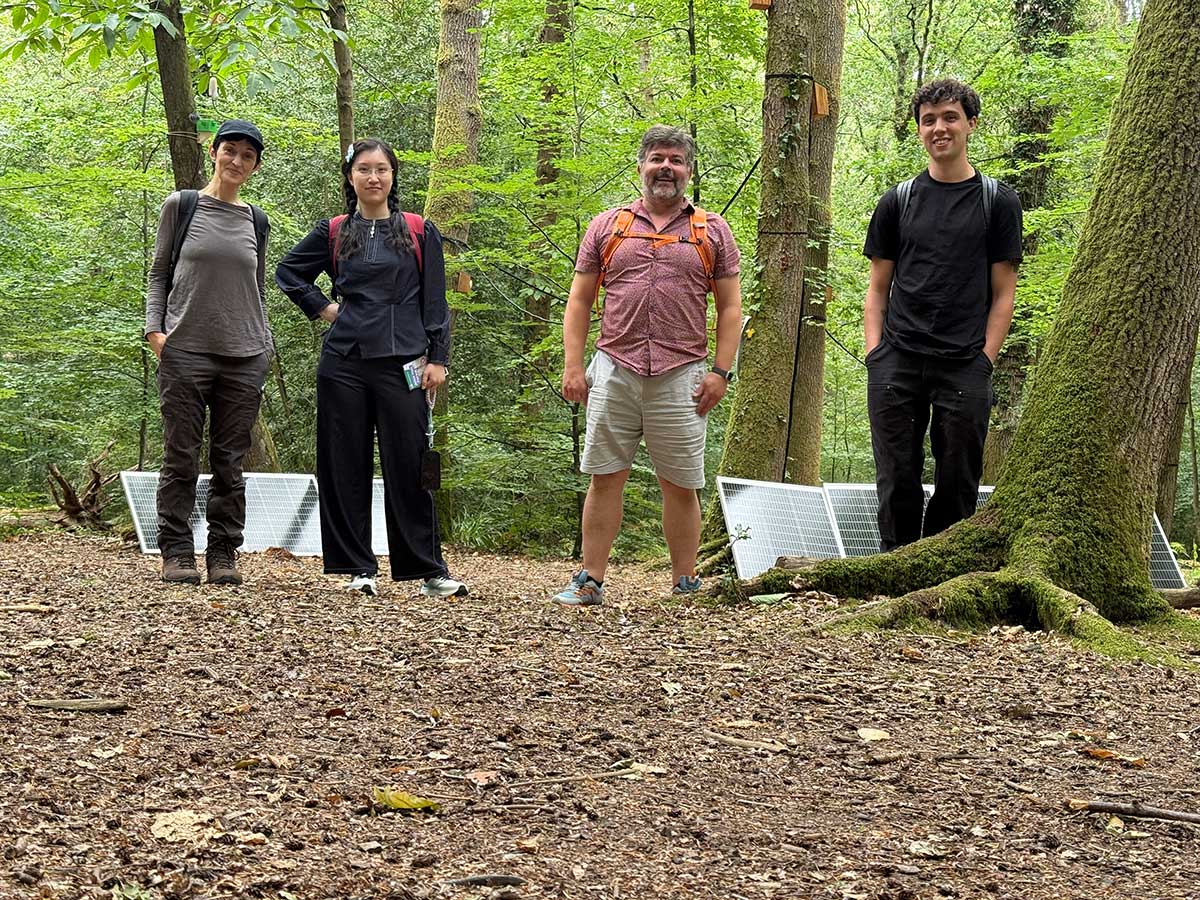Exploring Dendrophone - A day at Alice Holt Forest
From left-right, Anna Xambó, Lianganzi Wang, Melissa Yeo, Merlin Goldman, and Nicolas Garcia
A group of incoming Queen Mary University PhD students, led by Dr Anna Xambó Sedó, visited Alice Holt Forest on Monday August 18th, 2025, in the heart of the summer holidays. As we arrived at the visitor centre, the grounds were full of families, laughing, playing and chatting over lunch. The occasional sunbeam pierced through the mild late summer clouds, providing welcome relief from the long sunny spells we’d been having recently. We were here to visit the remaining installations from the Sensing the Forest project, and so after a hot drink, we headed over.
There are some brilliant accounts of numerous other field trips to the site on the blog page, so I will focus my blog post on discussing my thoughts about Dendrophone’s sound material emanating from the birdhouse-like speaker array, and their marriage with the natural soundscape of the forest.
I have found that meaningful sound sources and mappings are integral to any application of a data sonification process. It can make or break the delivery and impact of the installation, and in the worst case, disrupt the ecosystem’s soundscape in damaging ways if deployed in an ecological context. Bernie Krause, a prominent acoustic ecologist, proposed the Acoustic Niche Hypothesis, which suggests that organisms in an ecosystem partition the acoustic space, forming a virtual symphony of environmental sounds.
The first thing that struck me about Dendrophone, aside from the spatial immersion created by the multichannel speaker array, was how naturally each of its three sound layers fit into the acoustic space. Depending on where you were standing, the mixture of Dendrophone and Alice Holt Forest changed, but there was always space for both to coexist and flow with each other.
This harmonious coexistence was facilitated by the choice of geophonic sound material. The three layers featuring sounds like wooden wind chimes, resonant drones, and noise gave breathing room for biophonic organisms, mainly birds, in the forest to sound on top of the installation.
Please read Daniel Gill’s earlier blog post about their own personal reflection on Dendrophone, which discusses the specific data mappings and the congruency of the sound material used to augment these data sources, in conversation with Peter Batchelor.
Overall, I came away feeling very inspired by the installation, in no small part due to the way it coexisted with the acoustic space of the forest. The installation created an environment that naturally invites visitors to listen to both soundscapes and find connections to the sounding organisms in the forest. The installation is being uninstalled on 1st September 2025, so if you have the opportunity to experience this unique blend of art, science, and nature before then, I recommend it big time!
